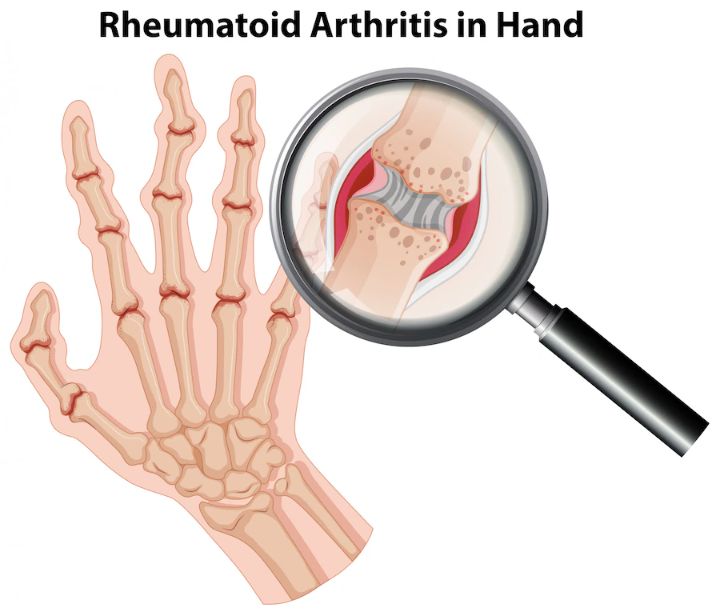Arthritis is a common condition that affects millions of people worldwide. It is a degenerative disease that occurs when the protective cartilage that cushions the joints wears down over time, causing the bones to rub against each other.
This results in pain, stiffness, and swelling in the joints, making movement difficult and uncomfortable. One of the areas that arthritis commonly affects is the hand and wrist.
Hand or wrist arthritis, also known as arthritis of the hand and wrist, is a condition that can have a significant impact on a person’s daily life. It can be caused by a variety of factors, such as age, genetics, repetitive movements, and certain medical conditions. Symptoms of hand and wrist arthritis can range from joint stiffness and swelling to deformities and reduced grip strength.
Arthritis is a medical condition that causes inflammation and stiffness in the joints. When it develops in the hand or wrist, it can cause significant discomfort and impair one’s ability to perform everyday tasks.

Photo Credit: Freepik
Different types of arthritis can affect the hand and wrist. The most common forms include osteoarthritis, rheumatoid arthritis, and post-traumatic arthritis.
Osteoarthritis is a degenerative condition that results from the wear and tear of cartilage in the joints. It commonly affects the joints at the base of the thumb, as well as the middle and end joints of the fingers. Symptoms of osteoarthritis in the hand and wrist include:
Rheumatoid arthritis is an autoimmune disorder that causes the body’s immune system to attack the joints. It can affect various joints throughout the body, including those in the hand and wrist. Symptoms of rheumatoid arthritis in the hand and wrist include:
Post-traumatic arthritis occurs after a traumatic injury to the hand or wrist, such as a fracture or dislocation. The resulting damage to the joint can lead to the development of arthritis over time. Symptoms of post-traumatic arthritis in the hand and wrist include:
If you are experiencing symptoms of hand or wrist arthritis, it is essential to seek medical attention promptly. A healthcare professional can perform a thorough evaluation and recommend an appropriate course of treatment to manage your symptoms and improve your quality of life.

Photo Credit: brgfx
Arthritis of the hand and wrist is a multifactorial condition that develops due to various causes. While some cases are related to age and genetics, others are caused by lifestyle factors and medical conditions. Understanding the underlying causes can help in preventing the onset of the disease and managing its symptoms effectively.
Studies have shown that genetics play a role in developing hand and wrist arthritis. People with a family history of arthritis are more likely to develop the condition. Certain genes may cause the immune system to attack the joints, leading to inflammation and damage.
As we age, the cartilage in our joints wears down, leading to arthritis. This natural process can cause pain and stiffness in the hand and wrist joints, particularly in the fingers and thumbs. Individuals over 50 are at a higher risk of developing hand and wrist arthritis.
Repetitive hand and wrist movements, such as typing, using a computer mouse, and playing instruments, can cause strain and stress on the joints. Over time, these actions can lead to the development of arthritis in the hands and wrists. People who work in certain occupations that involve repetitive hand and wrist motions are also at a higher risk.
Several medical conditions can contribute to the development of hand or wrist arthritis. These include rheumatoid arthritis, psoriatic arthritis, osteoarthritis, and gout. These conditions cause inflammation and damage to the joints, leading to pain and stiffness.

Photo Credit: Freepik
Hand and wrist arthritis can cause a variety of symptoms that can impair daily activities. The following are the common symptoms experienced by individuals with hand and wrist arthritis:
The stiffness in the joints of the hand and wrist is one of the most common symptoms of arthritis. This stiffness can result in difficulty in performing fine motor movements such as gripping, typing and buttoning. Joint stiffness is most common in the mornings and can last for hours.
Another common symptom of hand and wrist arthritis is swelling in the affected areas. Swelling can cause pain and discomfort, and it can limit the range of motion in the hand and wrist joints.
Hand and wrist arthritis can also result in joint deformities, such as knobby finger joints or a crooked wrist. These deformities can impair the function of the affected area and lead to reduced grip strength.
One of the most frustrating symptoms of hand or wrist arthritis is reduced grip strength. The inability to grab or hold onto objects can significantly impact daily activities such as cooking, writing, and even brushing teeth.
If you are experiencing any of these symptoms, it is important to consult with a healthcare professional for an accurate diagnosis and appropriate treatment.

Photo Credit: stockking
There are several treatment options available for managing hand and wrist arthritis. The choice of treatment depends on a variety of factors, including the severity of the condition and the individual’s overall health.
Individuals with hand or wrist arthritis need to work closely with their healthcare provider to determine the best treatment plan for their specific needs.

Photo Credit: standret
Living with hand or wrist arthritis can be challenging, but there are practical steps you can take to manage your symptoms and improve your overall quality of life. Here are some tips and advice to help you cope with the condition:
If you suspect that you have hand or wrist arthritis, it is important to seek professional help from a doctor or a rheumatologist. They can diagnose your condition, recommend treatment options, and help you manage your pain.
Pain is a common symptom of hand or wrist arthritis. You can try over-the-counter pain medications, such as ibuprofen or acetaminophen, to manage your pain. You can also use hot or cold therapy to soothe your joints and reduce inflammation.
Regular exercise can help improve joint mobility, increase strength, and reduce stiffness. Low-impact exercises, such as swimming, cycling, and walking, are beneficial for individuals with hand or wrist arthritis.
Assistive devices like splints and braces can help support your joints and reduce pain. You can also use ergonomic tools like pens or keyboards to ease the pressure on your hands and wrists.
Simple lifestyle changes can help improve your symptoms. For example, eating a healthy and balanced diet can reduce inflammation. You can also try stress-reducing techniques like meditation or yoga to manage pain and improve your mental health.
By following these tips, you can effectively manage your hand and wrist arthritis, reduce pain and improve your overall quality of life.
A: Hand and wrist arthritis refers to the inflammation and deterioration of the joints in the hand and wrist, leading to pain, stiffness, and reduced functionality.
A: The types of arthritis commonly affecting the hand and wrist include osteoarthritis, rheumatoid arthritis, and psoriatic arthritis.
A: Hand and wrist arthritis can be caused by a combination of factors, including age, genetics, repetitive movements, previous injuries, and underlying medical conditions.
A: Symptoms of hand and wrist arthritis may include joint stiffness, swelling, pain, deformities, reduced grip strength, and difficulty performing daily tasks.
A: Treatment options for hand and wrist arthritis include non-surgical approaches such as medications, splints, physical therapy, and lifestyle modifications. In severe cases, surgical interventions such as joint replacements may be necessary.
A: Managing hand and wrist arthritis involves pain management techniques, lifestyle modifications, self-care strategies, and regular medical care. Working with healthcare professionals to develop an individualised management plan is important.